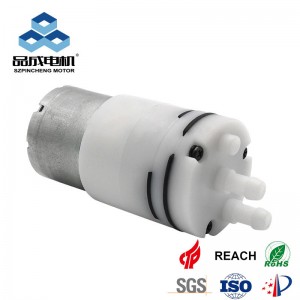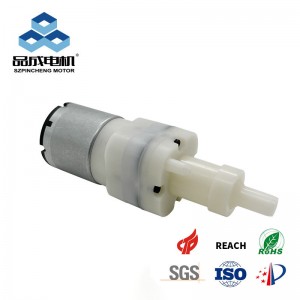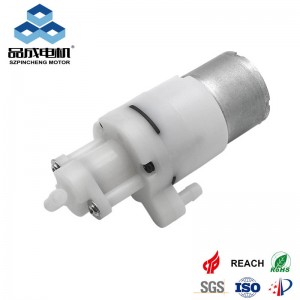Micro Foam Pumps: Comprehensive Specifications for Optimal Performance
In the realm of fluid dispensing technology, Micro foam pumps have emerged as a game-changer, offering precise, efficient, and user-friendly solutions for a wide range of industries—from personal care and pharmaceuticals to household cleaning. Unlike traditional pumps, these specialized devices generate ultra-fine, consistent foam that minimizes product waste, enhances application accuracy, and improves user experience. To fully leverage the benefits of Micro foam pumps, understanding their key specifications is critical. This article breaks down the essential technical details, while also highlighting how they relate to complementary solutions like Foam Dispenser Pump and Compact Foam Pump systems.
1. Core Definition: What Are Micro Foam Pumps?
Micro foam pumps are a subset of dispensing pumps designed to produce micro-sized foam bubbles (typically 50–500 micrometers in diameter) by mixing a liquid product with air at a precise ratio. Unlike standard Foam Dispenser Pump units, which may generate larger, less uniform foam, micro foam pumps use advanced engineering to ensure each dispense delivers a 细腻,dense foam that adheres better to surfaces or skin. This makes them ideal for products where precision matters, such as facial cleansers, hand sanitizers, medical antiseptics, and even industrial lubricants.
A key advantage over bulkier alternatives is their compatibility with Compact Foam Pump designs—many micro foam pumps are engineered with space-saving features, making them suitable for travel-sized containers, small cosmetic tubes, or tight packaging layouts where size is a constraint.
2. Key Specifications of Micro Foam Pumps
To evaluate and select the right Micro foam pumps for your application, focus on these critical technical parameters:
A. Foam Quality & Consistency
The primary function of a Micro foam pump is to generate high-quality micro-foam, so this specification is non-negotiable.
-
Bubble Size: Standard micro foam pumps produce bubbles ranging from 50–500 μm. Smaller bubbles (50–200 μm) are ideal for skincare products (e.g., foam cleansers) as they penetrate pores without irritation, while larger micro-bubbles (200–500 μm) work well for household cleaners, ensuring even coverage on surfaces.
-
Foam Density: Measured in g/cm³, density typically ranges from 0.02–0.08 g/cm³. Denser foam (0.06–0.08 g/cm³) is more durable and less likely to collapse, making it suitable for products that require prolonged contact (e.g., medical disinfectants).
-
Foam Uniformity: High-quality micro foam pumps maintain consistent bubble size and density across every dispense. Poor uniformity can lead to product waste or uneven application— a common issue in low-grade Foam Dispenser Pump models.
B. Dispensing Performance
Reliable dispensing is essential for user trust, especially in medical or cosmetic applications.
-
Dispense Volume: Micro foam pumps typically deliver 0.2–2.0 mL of foam per stroke. For personal care (e.g., facial foam), smaller volumes (0.2–0.5 mL) prevent overuse, while household products may require 1.0–2.0 mL per dispense.
-
Flow Rate: Measured in mL/s, flow rate ranges from 0.1–0.5 mL/s. A steady, slow flow rate (0.1–0.2 mL/s) ensures precise application (e.g., in dental foams), while faster rates (0.3–0.5 mL/s) suit high-volume uses like kitchen cleaners.
-
Priming Requirement: Most micro foam pumps require 1–3 priming strokes to start foam generation. Low-priming designs (1 stroke) are preferred for consumer products, as they reduce frustration compared to bulkier Compact Foam Pump alternatives that may need 3+ strokes.
C. Material Durability & Compatibility
The materials used in Micro foam pumps directly impact their lifespan, safety, and compatibility with different liquids.
-
Housing Materials: Common options include polypropylene (PP) and polyethylene (PE), both of which are lightweight, chemical-resistant, and suitable for Compact Foam Pump designs. For high-end applications (e.g., luxury cosmetics), some pumps use ABS plastic for a premium finish.
-
Sealing Components: Seals and gaskets are typically made of nitrile rubber, silicone, or EPDM. Silicone is ideal for medical or food-grade products, as it is FDA-approved and resistant to harsh chemicals (e.g., alcohol-based sanitizers). Nitrile rubber works well for household cleaners, offering excellent oil and solvent resistance.
-
Liquid Compatibility: Micro foam pumps must be compatible with the product’s formulation. For example, pumps used with acidic liquids (e.g., vitamin C serums) require corrosion-resistant materials (e.g., stainless steel springs), while oil-based products (e.g., massage foams) need seals that resist swelling. Always check compatibility to avoid pump failure— a mistake often made when repurposing standard Foam Dispenser Pump units.
D. Design & Size
Micro foam pumps are prized for their compactness, making them versatile for various packaging types.
-
Dimensions: Most models have a diameter of 12–24 mm and a height of 25–50 mm, making them compatible with standard bottle necks (e.g., 20–40 mm). For ultra-small packaging (e.g., travel-sized tubes), Compact Foam Pump variants of micro foam pumps can be as small as 10 mm in diameter and 20 mm in height.
-
Mounting Type: Options include screw-on (most common), press-fit, or snap-on designs. Screw-on mounts are ideal for rigid bottles (e.g., plastic or glass), while press-fit mounts work well for flexible tubes— a key consideration when pairing with Foam Dispenser Pump systems.
-
Ergonomics: The pump’s actuator (the part users press) should be comfortable and easy to operate. Soft-touch actuators or ergonomic shapes reduce hand fatigue, a feature often missing in generic Compact Foam Pump models.
E. Safety & Compliance
For industries like healthcare and cosmetics, safety certifications are non-negotiable.
-
FDA Compliance: All materials in contact with liquids must meet FDA standards (21 CFR Part 177) to ensure they are non-toxic and do not leach chemicals into the product.
-
EU REACH & RoHS: For global markets, Micro foam pumps must comply with EU regulations restricting hazardous substances (e.g., lead, mercury) and ensuring environmental safety.
-
Sterility: Medical-grade micro foam pumps (e.g., for wound care foams) must be sterilized using methods like gamma radiation or ethylene oxide (EO) to prevent contamination.
3. How Micro Foam Pumps Compare to Foam Dispenser Pump & Compact Foam Pump
While these terms are often used interchangeably, they refer to distinct products:
-
Micro Foam Pumps: Focus on generating ultra-fine, consistent micro-bubbles. They prioritize foam quality over size, making them ideal for precision applications (e.g., skincare, medical).
-
Foam Dispenser Pump: A broader category that includes any pump generating foam (micro or macro). These are often less precise, with larger bubble sizes (500+ μm), and are used for general purposes (e.g., hand soap dispensers).
-
Compact Foam Pump: A design category describing small, space-saving pumps. These can be either micro foam pumps (for precision) or standard foam pumps (for general use). For example, a Compact Foam Pump used in travel-sized hand sanitizer may also be a Micro foam pump if it produces fine bubbles.
4. Choosing the Right Micro Foam Pump for Your Needs
To select the best Micro foam pump, consider:
-
Product Formulation: Is your liquid acidic, oil-based, or alcohol-based? Choose materials (e.g., silicone seals) that resist degradation.
-
Application: For skincare, prioritize small bubble sizes (50–200 μm) and low dispense volumes (0.2–0.5 mL). For household cleaners, opt for larger micro-bubbles (200–500 μm) and higher volumes.
-
Packaging: Ensure the pump’s dimensions and mounting type fit your container (e.g., a 12 mm diameter pump for a small tube).
-
Regulatory Requirements: For medical or food-grade products, confirm FDA and REACH compliance.
you like also all
Read More News
Post time: Sep-27-2025




